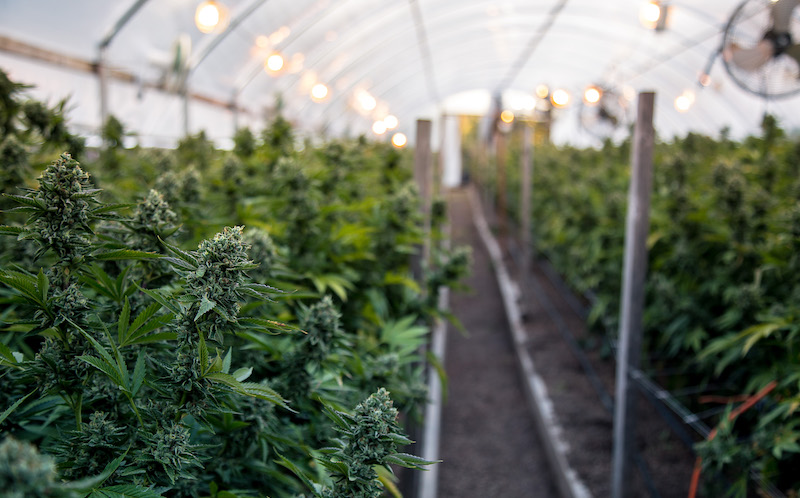
Regulation of marijuana has been based on a false distinction for almost a century.
Gaul was divided into three parts, but marijuana needs only two: medical use and recreational use.
Even that classification is twice what we need, because the U.S. Food and Drug Administration (FDA)—the federal agency responsible for deciding what is a “drug” and what drugs are “safe” and “effective”—could never approve the marijuana plant as a safe and effective drug or smoking marijuana as a nonhazardous route of medical administration. The claim that the plant form of marijuana can and should be smoked for medical purposes is a hobgoblin.
People have practiced rudimentary forms of medicine for millennia. In that process, they used whatever plants were handy, or ancestors had found useful, in the hope of curing illness or obtaining relief from its misery. Cannabis is one of those plants. Archaeological evidence shows that people used it more than 10,000 years ago. Some commentators argue, therefore, that private parties should be allowed to use marijuana as a natural treatment for pain, anxiety, and other disorders.
Contemporary medicine, however, does not rely on home grown, herbal folk remedies to cure disease, for a host of reasons.
Until the early 20th century, it was common for pharmacists to prepare, and physicians to administer, nostrums created from complex natural plants, such as cannabis. But not today. So that a physician knows exactly what medications to prescribe for a patient, contemporary pharmacology requires that prescription and over-the-counter medications have standard ingredients, formulations, and potency.
Marijuana does not. It contains hundreds of chemicals, and its features can vary by strain, breeding, region and process of cultivation, storage time, and so forth. Consider its psychoactive component—delta-nine-tetrahydrocannabinol, or “THC.” Cannabis had approximately a 1 percent to 3 percent THC content from the 1960s through the 1980s, but today it can be 12 percent to 20 percent in the plant form or in hashish—dried cannabis resin and crushed plants. Hash oil, an oil-based extract of hashish, has an even greater THC content—15 percent to 50 percent—and other formulations reach the 90 percent range.
Moreover, there is no standard “dosage” for smoked marijuana, unlike manufactured pharmaceuticals. The latter have an active ingredient specified in milligrams and the usage directions, which by law must appear on the package’s label and state precisely how many pills should be taken and when. There are no comparable uniform measurements or standards for smoked marijuana’s components, nor are there directions for use. There also is no standard number, depth, or length of inhalations. Accordingly, a physician cannot precisely know how much of those constituents someone receives. And that does not even begin to address the problem caused by the presence of toxins—such as pesticides, fungi, mold, lead, formaldehyde and other substances—that can and have contaminated commercial marijuana and are forbidden in commercial pharmaceuticals. In sum, the rudimentary features of a medicine required by modern pharmacology—and demanded by federal law—are critically important for a physician to know when treating a patient.
Contemporary society also does not trust the unregulated backyard, in-home, or agricultural production and distribution of medications. To protect the public against snake-oil salespeople and other charlatans, Congress enacted the Federal Food, Drug, and Cosmetic Act of 1938 (FDCA), the Drug Amendments of 1962, and scores of complementary laws. Those statutes are critically important features of today’s public health regulatory programs. They prohibit, using criminal penalties, the distribution of a new drug in interstate commerce, unless the FDA Commissioner has previously found that it is “safe” and “effective” for its intended use. These laws empower FDA to carefully and strictly regulate and oversee the production of medicines intended for human consumption—and drugs cannot be disguised in food to avoid regulation, because FDA regulates food too. Those laws reflect an 80-year consensus that the nation should leave to the professional, scientific judgment of experts—physicians, biochemists, and the like—the question of which drugs can be created and used for therapeutic purposes by educated, trained, and licensed physicians—not “budtenders.”
Throughout the same period, however, Congress adopted separate laws governing marijuana use. Federal law has effectively prohibited the use of cannabis since the Marijuana Tax Act of 1937—a date that is significant because it preceded by a year Congress’s adoption of the FDCA. Since then, Congress has never re-examined and blended the food and drug code with the marijuana laws. On the contrary, in the Controlled Substances Act of 1970 (CSA), Congress placed marijuana in the same category of drugs as heroin—a class of drugs that cannot be dispensed for any medical purpose, because they are unhelpful, addictive, and dangerous. Atop that act, Congress gave the U.S. Attorney General, a law enforcement officer, not the FDA Commissioner, a public health official, the authority to decide whether to reschedule cannabis so that a physician can prescribe it. Clearly, the CSA and the FDCA take contrasting approaches to this issue: The former adopts a law enforcement strategy, while the latter follows a medical or public health model.
To be sure, the belief that marijuana could have legitimate therapeutic benefits has a basis in science. FDA has found that a few cannabinoids—that is, biologically active constituents of cannabis—can have positive medical benefits, and FDA has approved the manufacture and distribution of synthetic forms of those substances to treat disease, most recently the spasticity caused by rare, severe forms of childhood epilepsy. There might be other therapeutically useful cannabinoids as well. Regulators and scientists should conduct the necessary research to learn if that is true.
But the states that have authorized marijuana to be smoked for medical purposes have simply taken the law into their own hands. Since 1996, more than 30 states have permitted marijuana to be smoked for medical purposes, despite the fact that FDA has never approved marijuana for medical use and there is no FDA-approved medicine that is smoked. The reason is that there are serious, adverse, and undeniable health risks associated with smoking any agricultural product. Since 1964, U.S. Surgeons General have consistently found that smoking tobacco is dangerous. Congress finally agreed in 2009 by passing the Family Smoking Prevention and Tobacco Control Act, which empowers FDA to regulate cigarettes. Smoking marijuana carries many of the same risks as smoking tobacco, so no FDA Commissioner could legitimately treat marijuana in a unique manner.
Much of the debate over marijuana legalization has been misguided—intentionally so. Legalization’s advocates have urged states to adopt medical marijuana laws to ease the suffering of the afflicted and dying. In so doing, the medical marijuana movement has played on the compassion that Americans feel toward people about to traverse the River Styx or who are in such pain or distress that they would gladly make that crossing now. State approval of marijuana for medical purposes, however, is proof that hypocrisy is the tribute that vice pays to virtue.
The real question is whether lawmakers should revise federal law to allow marijuana to be used for recreational purposes, just as alcohol and tobacco can be so used today. If Americans are to honestly debate marijuana use, the debate must be over its utility as a recreational drug, not as medicine, and who should regulate its potential uses—the FDA Commissioner or the U.S. Attorney General. The United States has followed the wrong approach to marijuana regulation for 80 years. It is time to get it right.




